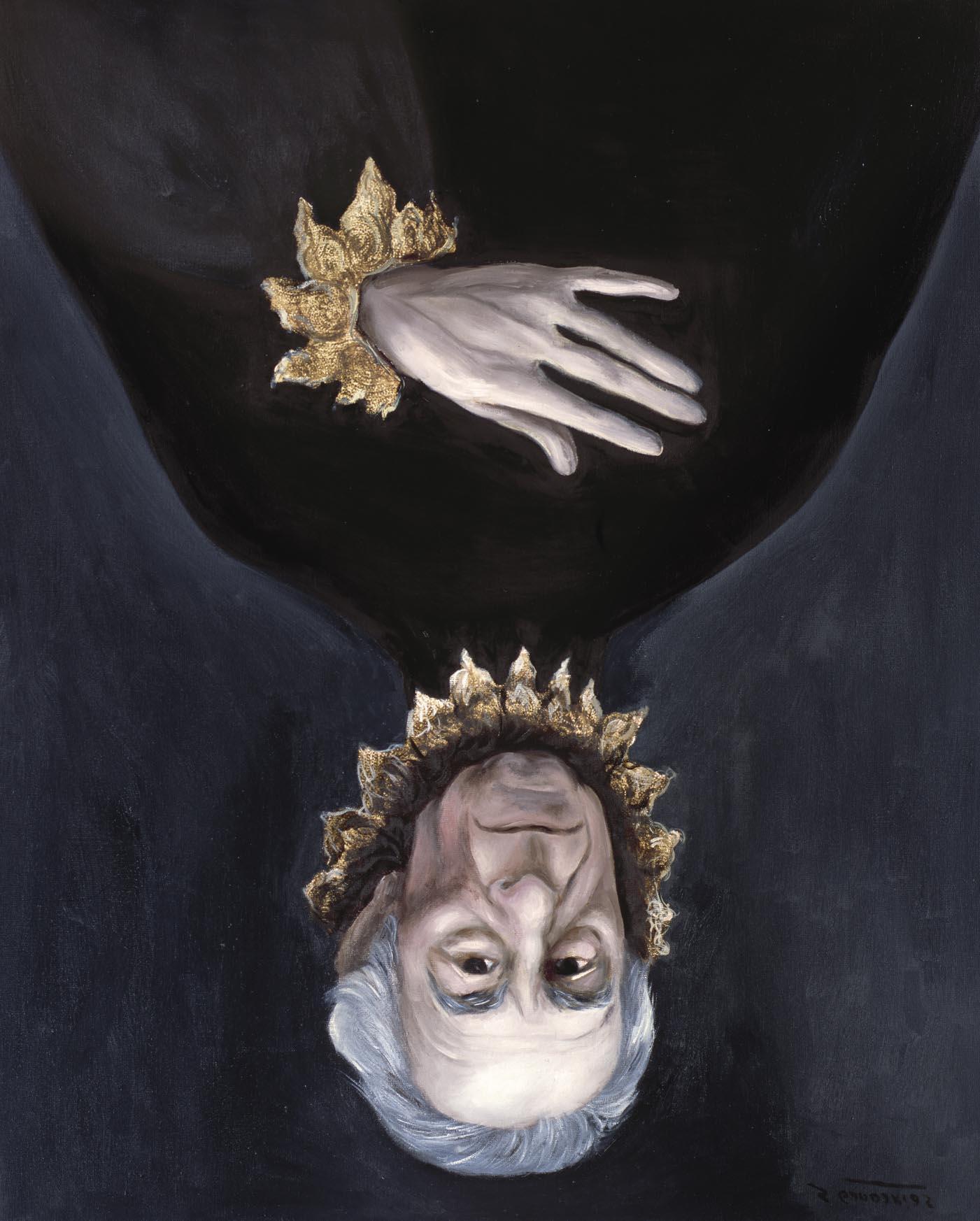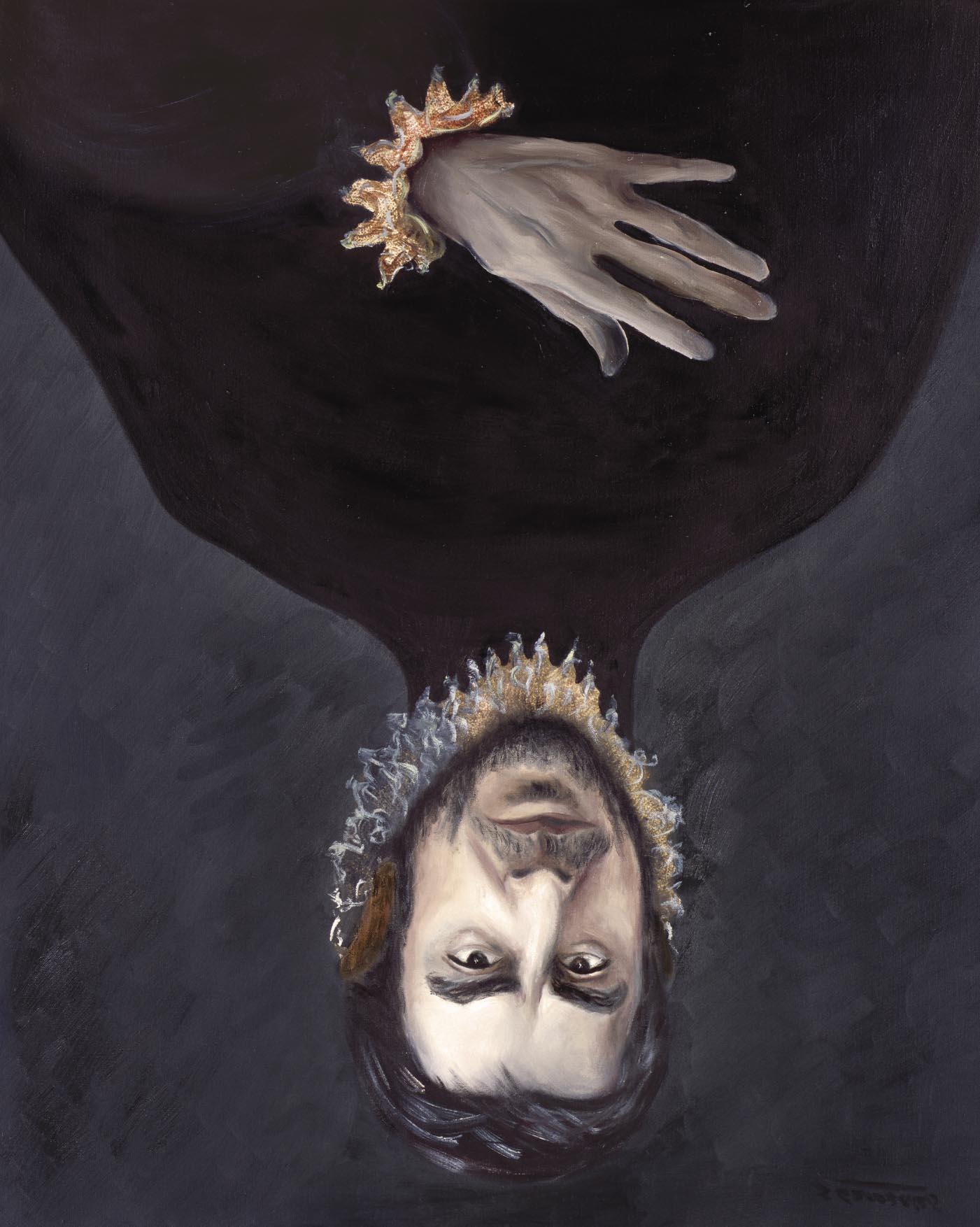Sofía Gandarias
51
Sami Nair The art of unsaid
El arte de lo no dicho
It is known. A painting speaks. Not because it builds up a discourse, an argument or a message, then it would be a poster, propaganda or a leaflet. The painting speaks, like Merleau-Ponty said, to the spirit’s eye in the measure it makes of the image an ideal representation, an acting idea. All the paintings of Sofía Gandarias speak. Master of the portrait, worthy emulator of her forbear Velazquez, holds the view that painting is not a signage art but a form of multiple significances.
Es sabido. Un cuadro habla. No porque construya un discurso, una argumentación o un mensaje, pues entonces se trataría de un cartel, texto de propaganda, octavilla. El cuadro habla, como decía Merleau-Ponty, al ojo del espíritu en la medida en que hace de la imagen una representación ideal, una idea en acto. Los cuadros de Sofía Gandarias hablan todos. Maestra del retrato, digna émula de su antepasado Velázquez, mantiene que la pintura no es un arte señalético sino una forma de significaciones múltiples.
This is the reason why she is interested in the unsaid and not in the said, the potential and not the immediate. What can be understood and not what is understood at first sight. Let us look to the portraits of great writers –Carlos Fuentes or Juan Goytisolo for example– or great artists –Frida Kahlo, Nureyev, Menuhin– and observe: they always define several orders of significances, the face of Juan Goytisolo is indisssociable of the drama happening in Bosnia, Fuentes’s face is submerged in the hurt and violent history of the Mexican land. It is elaborated not following tracks or visible references, but on a remarkable work on the face. All the history of Mexico and all the work of Carlos Fuentes are incarnated in the hard eyes of the great Mexican master. The blood of the innocents, the tearing of the identity, the unlimited greatness of the creative of the breakings off live in the irascible and majestic look of the great Spanish master Juan Goytisolo. Sofía Gandarias has invented a new genre that alters the conventional frontiers among arts, the divisions among genres. The restrictive identifications of the things. Watch the series dedi-
Sami Naïr is a French political philosopher, and a specialist on migration movements. He has been an advisor to the Government of the French Republic, and a Member of the European Parliament. He also serves as professor in several French and Spanish universities.
#11
El Caballero J. M. Coetze Óleo sobre lienzo / 100 x 81 cm. / 2014
Razón por la cual le interesa lo no dicho y no lo dicho, lo virtual y no lo real, lo potencial y no lo inmediato. Lo que puede entenderse y no lo que se entiende a simple vista. Tomemos los retratos de grandes escritores –los de Carlos Fuentes o Juan Goytisolo, por ejemplo– o de grandes artistas –Frida Kahlo, Nureyev, Menuhin– y observémoslos: siempre definen varios órdenes de significación, el rostro de Juan Goytisolo es indisociable del drama que se representa en Bosnia, el de Fuentes está sumergido en la historia lastimada y violenta de la tierra mexicana. Está elaborado no a través de pistas, de referencias visibles, sino mediante una excepcional labor sobre el rostro mismo. Toda la historia de México y toda la obra de Carlos Fuentes se encarnan en los ojos duros del gran maestro mexicano. La sangre de los inocentes, el desgarramiento de la identidad, la amplitud ilimitada de las rupturas creadoras habitan la mirada majestuosa e irascible de gran maestros español Juan Goytisolo. Sofía Gandarias ha inventado un nuevo género, que altera las fronteras con-
Sami Naïr es un filósofo político francés, y un especialista en movimientos migratorios.Fue asesor del Gobierno de la República Francesa, y Parlamentario Europeo. Es además profesor en varias universidades francesas y españolas.





























